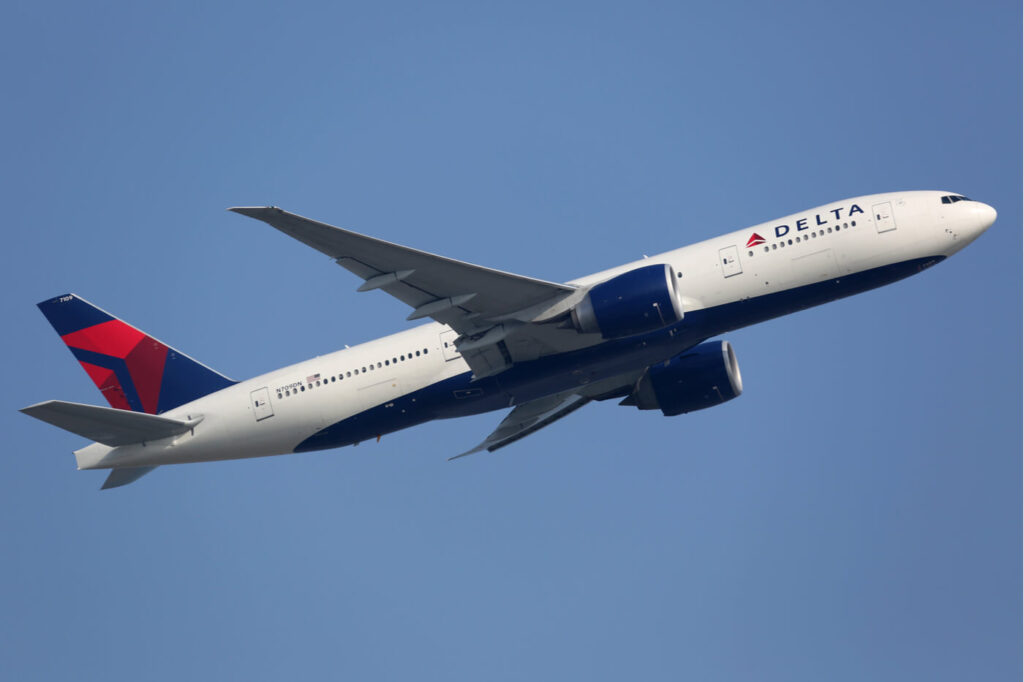Delta Air Lines landed in hot water after one of its Boeing 777 aircraft dumped fuel over the suburbs of Los Angeles. To make matters even worse, the location where the fuel landed happened to be an elementary school. About twenty children and ten adults who were in the courtyard of the school were affected.
The Boeing 777-200, registered N860DA, was two minutes into climbing out of Los Angeles International Airport (LAX) to carry out flight DL89 to Shanghai Pudong Airport (PVG), China, with 149 passengers on board when the crew reported compressor stalls in the right-hand Trent 800 engine. They were cleared for an emergency landing back in their departing airport. To avoid landing heavy, the flight crew dumped some of its fuel and eventually landed without any damage reported.
Minutes later, the Los Angeles Fire Department was called to intervene for an emergency at Park Avenue Elementary School in Cudahy, some 25 kilometers (15 miles) east of the airport. A liquid was reported raining down onto the school playground where 60 people were at the time, including two classes of pupils and several employees.
Seventeen children and nine adults complaining of skin irritation were treated on the spot by the emergency services, none required to be transported to a hospital. “Students and employees who were on the playground were sprayed by the fuel, or inhaled fumes,” said Jackie Goldberg, board vice president of the Los Angeles Unified School District, “some had to be treated for injuries, including breathing problems and skin irritation.” Half a dozen more schools were in the concerned area, according to the New York Times. However, no other emergencies were reported.
“We are in touch with Los Angeles World Airports and the LA County Fire Department and share concerns regarding reported minor injuries to adults and children at a school in the area,” said Delta.
Fuel dumping is a normal procedure in case of an emergency landing, especially when declared so early after takeoff. For safe operations, the aircraft needs to reach a weight within the maximum structural landing weight limits.
On May 5, 2019, a Superjet 100, which took off from Moscow Sheremetyevo Airport (SVO) to Murmansk Airport (MMK), was hit by lightning shortly after takeoff, disabling radio communication. Unable to reach air traffic control, the pilots decided to land heavy. Upon landing, the Superjet 100 hit the runway, which sparked a fire at the back of the aircraft. Out of the 78 people on board, 40 passengers and one crew member were killed.
The investigation estimated that the weight of the aircraft was about 42,600 kilograms (94,000 pounds) at the time, which exceeded the maximum landing weight by 1,600 kilograms (3500 pounds). While the final report of the investigation has yet to be published, the captain was charged with criminal charges for violating “traffic safety and operation of air transport.” He is facing four to ten years of prison.
As for Delta Air Lines flight DL89, the Federal Aviation Administration announced that an investigation into the incident was opened. “There are special fuel-dumping procedures for aircraft operating into and out of any major U.S. airports,” the agency says, adding “these procedures call for fuel to be dumped over designated unpopulated areas, typically at high altitudes so the fuel atomizes and disperses before it reaches the ground.”
The recommended altitude is between 1500 and 1800 meters (5000 and 6000 feet). However, it appears that this time the fuel was dumped at a low altitude of around 700 meters (2300 feet).
